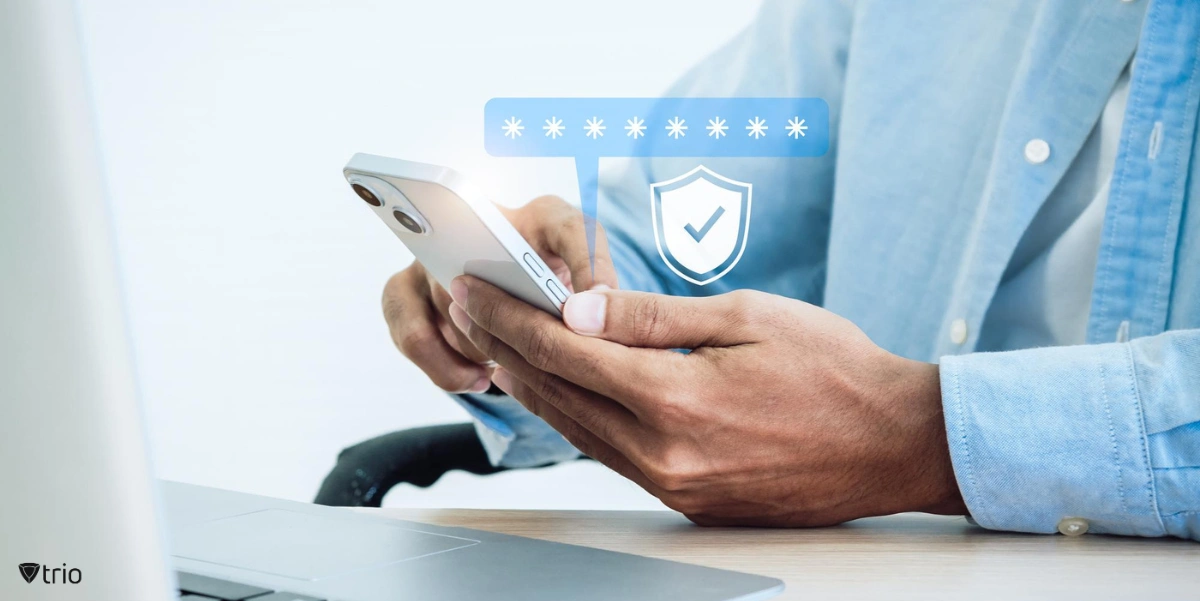An organization’s rules, practices, and guidelines for managing, controlling, and safeguarding mobile devices on its network are referred to as mobile device management (MDM) policies. Generally, this policy applies to mobile devices—such as tablets and smartphones—that staff members use for work-related activities. To guarantee that mobile devices are used securely and by organizational standards, it includes elements like device configuration, security settings, application management, and data access controls.
The importance of a Mobile Device Management Policy for IT administrators cannot be overstated. In an era where mobile devices play a pivotal role in business operations, a robust MDM policy helps IT administrators maintain control and security over the organization’s mobile ecosystem. It allows administrators to enforce security measures, such as encryption and password policies, track device inventory, remotely wipe data in case of loss or theft, and manage software updates. This proactive approach not only safeguards sensitive corporate information but also streamlines device deployment and maintenance processes, enhancing overall efficiency and reducing the risk of security breaches. In essence, a well-defined MDM policy is crucial for ensuring the optimal functionality, security, and compliance of mobile devices within an organization’s IT infrastructure.
Why Do Businesses Need an MDM Policy?
There are several reasons why businesses need an MDM policy.
Security Enhancement: With the increasing use of mobile devices in the workplace, there’s a heightened risk of data breaches and unauthorized access. An MDM policy allows businesses to enforce security measures such as password protection, encryption, and remote data wiping to safeguard sensitive information in case of device loss or theft.
Compliance and Governance: Many industries have strict regulatory requirements regarding data protection and privacy. An MDM policy helps businesses adhere to these regulations by ensuring that mobile devices are used in compliance with legal standards. This is particularly important for sectors such as healthcare and finance, where the protection of sensitive information is paramount.
Device Configuration and Standardization: MDM policies enable IT administrators to centrally manage and configure mobile devices, ensuring uniformity across the organization. This standardization simplifies support, troubleshooting, and the implementation of software updates, reducing potential compatibility issues.
Application Management: Businesses often deploy specific applications to enhance productivity and collaboration. An MDM policy allows administrators to control which apps are installed on corporate devices, ensuring that only authorized and secure applications are used, minimizing the risk of malware or unauthorized software.
Remote Monitoring and Troubleshooting: IT administrators can remotely monitor and troubleshoot mobile devices through an MDM system. This capability reduces downtime, enhances support efficiency, and allows administrators to address issues promptly, even if the device is geographically dispersed.
Cost Efficiency: MDM policies contribute to cost efficiency by streamlining device deployment, management, and retirement processes. This helps businesses optimize their mobile device investments while minimizing the total cost of ownership.
Employee Productivity: By providing secure access to corporate resources from mobile devices, businesses can enhance employee productivity. An MDM policy ensures that employees can use their mobile devices for work purposes without compromising the security of company data.
How Will Different Industries Benefit from an MDM Policy?
The benefits of mobile device management policy tailored to specific industry needs offers numerous benefits across various sectors:
In healthcare, MDM policies ensure the secure handling of patient data on mobile devices, aiding compliance with strict privacy regulations like HIPAA. This facilitates efficient communication among healthcare professionals and improves collaborative efforts.
Financial institutions benefit from MDM policies by ensuring regulatory compliance through secure access to financial data and client information. This enhances transaction security, reducing the risk of fraudulent activities in financial transactions conducted via mobile devices.
The education sector leverages MDM policies to protect student information and comply with educational privacy laws. Additionally, MDM policies enable educational institutions to create secure and controlled environments for interactive and collaborative learning on mobile devices.
In the retail industry, MDM policies contribute to efficient inventory management by securing access to inventory systems on mobile devices. Moreover, these policies enhance the security of point-of-sale transactions, safeguarding customer payment information.
Manufacturing companies use MDM policies to track assets and manage inventory efficiently. Workers on the factory floor can securely access manufacturing systems and collaborate in real-time using mobile devices, thereby improving overall efficiency.
Law firms benefit from MDM policies by maintaining client confidentiality through secure handling of legal documents and communications on mobile devices. Attorneys can also securely access case-related information and collaborate on legal documents remotely.
Transportation and logistics industries optimize fleet management through MDM policies, monitoring routes, and enhancing overall fleet efficiency using mobile devices. These policies also ensure the security of mobile devices in tracking and managing the supply chain, reducing the risk of data breaches or disruptions.

What Are Common MDM Policies?
The specific number of MDM policies can vary based on the needs and preferences of individual organizations. MDM policies are typically customized to align with the specific requirements, industry regulations, and security standards of each organization. While there is no fixed or standardized number of MDM policies, organizations commonly establish a set of policies that cover various aspects of mobile device usage, security, and management.
In establishing a robust MDM strategy, organizations prioritize security policies to safeguard sensitive information. Password and authentication policies form a crucial layer, emphasizing the use of strong authentication methods, such as passwords and biometrics. Encryption requirements ensure that data stored on mobile devices remains secure, protecting unauthorized access. Device lockdown and restrictions further enhance security by enforcing measures like screen lock timeouts, while remote wipe capabilities allow swift and secure data erasure in the event of device loss or theft.
Application management policies are integral to controlling the software landscape on mobile devices. Defining approved application lists ensures that only authorized applications are installed, while guidelines for app installation and updates maintain alignment with security standards and business needs. Restrictions on certain app categories mitigate risks associated with potentially harmful or non-compliant applications.
Network and connectivity policies focus on establishing secure connections. Wi-Fi and VPN configurations are set to ensure that network connections are protected, while data usage policies manage costs and optimize performance. Network access controls further restrict access to sensitive data based on the security of the network connection.
Device enrollment and onboarding policies streamline the integration of devices into the corporate network. Clearly defined procedures for device enrollment coupled with onboarding requirements and guidelines ensure a secure and efficient onboarding process.
Compliance and regulatory policies address adherence to industry regulations such as HIPAA and GDPR, incorporating data retention and deletion policies. User education and acceptable use policies emphasize training requirements and provide guidelines for the appropriate use of company-provided devices. Device monitoring and auditing policies contribute to security and compliance through defined monitoring measures and reporting requirements.
BYOD (Bring Your Own Device) policies are essential for organizations accommodating personal devices in the workplace. These policies provide guidelines for personal device usage, balancing productivity with security measures tailored to BYOD scenarios.
Privacy policies round out the MDM strategy, offering guidelines for handling employee privacy and establishing clear data collection and usage policies. Collectively, these policies form a comprehensive framework that balances the benefits of mobile devices in the workplace with the imperative of maintaining security, compliance, and privacy standards.
Trio’s MDM solution has 4 main types of MDM policies:
- Security policies
- Application management policies
- Network and connectivity policies
- Device enrollment and onboarding policies
It’s important for organizations to carefully assess their unique needs and risks to determine the specific MDM policies required.
How to Create the Perfect MDM Policy
Creating a comprehensive and effective MDM policy is a strategic endeavor that demands careful consideration and collaboration. To initiate the process, conduct a thorough needs assessment, taking into account your organization’s industry, regulatory environment, and the diverse nature of your business operations. Engage key stakeholders, including IT, security, legal, and end-users, to gather valuable insights and ensure that the policy aligns with the needs and expectations of all involved parties.
Define clear objectives for the MDM policy, articulating specific goals related to security, compliance, and operational efficiency. Research industry best practices and draw insights from case studies to inform your approach. Customize the policy to fit seamlessly with your organization’s culture, processes, and technology infrastructure, considering the specific risks and challenges relevant to your business.
Establish robust security protocols within the policy, encompassing password policies, encryption requirements, and mechanisms for remote device management to protect against unauthorized access and data breaches. Address compliance requirements by integrating relevant industry standards (e.g., HIPAA, GDPR) and develop policies that ensure adherence to legal and regulatory standards.
Prioritize user experience by designing policies that are user-friendly and providing clear communication and training to end-users. Plan for device lifecycle management, encompassing device enrollment, onboarding, regular updates, and retirement. Implement guidelines for application management, and network controls, and, if applicable, establish a BYOD policy that balances the benefits of personal device use with security measures.
Develop monitoring and reporting protocols to track device usage, security incidents, and compliance. Regularly review and update the MDM policy to keep it aligned with evolving technology, emerging threats, and changes in business practices. Establish educational programs and training sessions to ensure employees understand and adhere to the MDM policy, fostering a culture of awareness and responsibility regarding mobile device security.
In adopting this systematic and collaborative approach, organizations can create a robust MDM policy that effectively balances security, compliance, and usability within the dynamic landscape of mobile technology. Regular reviews and updates will ensure the ongoing relevance and effectiveness of the policy in the face of technological advancements and evolving security challenges.

Mobile Device Management Policy Template
To simplify creating a mobile device management policy, we’ve created a template that you can download and use for your organization. Click the button below to download the printable template.
Conclusion
In conclusion, a mobile device management policy is essential for organizations in the mobile-centric business landscape. It establishes rules for the secure and compliant use of devices, ensuring optimal functionality and safeguarding sensitive information. As technology evolves, a systematic approach ensures the policy remains adaptive to emerging challenges, fostering a culture of awareness and responsibility in mobile device security. Finally, MDM policies should be periodically reviewed and updated to address evolving technology, security threats, and regulatory changes. Trio is an MDM solution that allows you to update policies across all devices and departments simultaneously. Check out this feature and others with Trio’s free demo available now.







